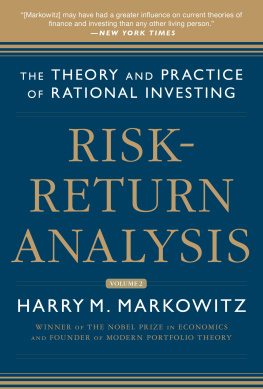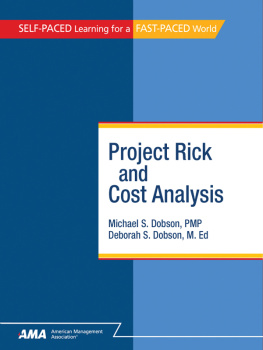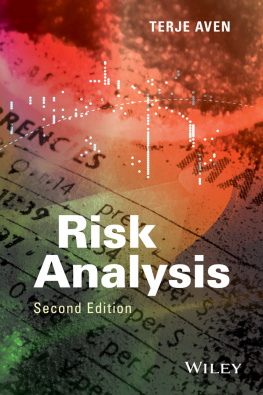Harry M. Markowitz - Risk-Return Analysis, Volume 2
Here you can read online Harry M. Markowitz - Risk-Return Analysis, Volume 2 full text of the book (entire story) in english for free. Download pdf and epub, get meaning, cover and reviews about this ebook. year: 2016, publisher: McGraw-Hill Education, genre: Home and family. Description of the work, (preface) as well as reviews are available. Best literature library LitArk.com created for fans of good reading and offers a wide selection of genres:
Romance novel
Science fiction
Adventure
Detective
Science
History
Home and family
Prose
Art
Politics
Computer
Non-fiction
Religion
Business
Children
Humor
Choose a favorite category and find really read worthwhile books. Enjoy immersion in the world of imagination, feel the emotions of the characters or learn something new for yourself, make an fascinating discovery.
- Book:Risk-Return Analysis, Volume 2
- Author:
- Publisher:McGraw-Hill Education
- Genre:
- Year:2016
- Rating:3 / 5
- Favourites:Add to favourites
- Your mark:
- 60
- 1
- 2
- 3
- 4
- 5
Risk-Return Analysis, Volume 2: summary, description and annotation
We offer to read an annotation, description, summary or preface (depends on what the author of the book "Risk-Return Analysis, Volume 2" wrote himself). If you haven't found the necessary information about the book — write in the comments, we will try to find it.
Risk-Return Analysis, Volume 2 — read online for free the complete book (whole text) full work
Below is the text of the book, divided by pages. System saving the place of the last page read, allows you to conveniently read the book "Risk-Return Analysis, Volume 2" online for free, without having to search again every time where you left off. Put a bookmark, and you can go to the page where you finished reading at any time.
Font size:
Interval:
Bookmark:

Copyright 2016 by Harry M. Markowitz. All rights reserved. Printed in the United States of America. Except as permitted under the United States Copyright Act of 1976, no part of this publication may be reproduced or distributed in any form or by any means, or stored in a database or retrieval system, without prior written permission of the publisher.
1 2 3 4 5 6 7 8 9 0 DOC/DOC 1 2 1 0 9 8 7 6
ISBN: 978-0-07-183009-6
MHID: 0-07-183009-X
e-ISBN: 978-0-07-183010-2
e-MHID: 0-07-183010-3
Library of Congress Cataloging-in-Publication Data
Markowitz, H. (Harry), 1927
Risk-return analysis : the theory and practice of rational investing vol. 2 / by Harry Markowitz.
pages cm
Includes bibliographical references.
ISBN-13: 978-0-07-183009-6 (alk. paper)
ISBN-10: 0-07-183009-X (alk. paper)
1. Investment analysis. 2. InvestmentsMathematical models. 3. Portfolio management. II. Title.
HG4529.M3755 2014
332.6dc23
2013018660
McGraw-Hill Education books are available at special quantity discounts to use as premiums and sales promotions, or for use in corporate training programs. To contact a representative, please visit the Contact Us page at www.mhprofessional.com.
Ode to Rationality
There once was a Rational Man,
Who loved his Rational Wife,
They had four Rational Children,
And lived a Rational Life.
They had a Rational Dog,
That chased their Rational Cat,
Who tried as it would,
Never quite could,
Catch the Irrational Rat.
Harry M. Markowitz
The Moving Finger writes; and, having writ,
Moves on: nor all your Piety nor Wit
Shall lure it back to cancel half a Line,
Nor all your Tears wash out a Word of it.
From The Rubaiyat of Omar Khayyam
Translated by Edward Fitzgerald
O n Page 45 of Volume I, copy reads as follows:
... , if two utility functions U and V are related linearly,
V = a + bU | b > 0 | () |
the probability distribution that maximizes EU also maximizes expected variance (EV).
Copy should read as follows:
... , if two utility functions U and V are related linearly,
V = a + bU | b > 0 | () |
The probability distribution that maximizes EU also maximizes EV.
The expected variance error was mistakenly inserted during the editing process. I regret that I did not catch it in the proofs.
T his is the second volume of a four-volume book on Risk-Return Analysis: The Theory and Practice of Rational Investing. The theory upon which this book is based is the theory of rational choice of von Neumann and Morgenstern (1944) and L. J. Savage (1954). While this theory applies to rational choice in general, rather than to rational investing specifically, for the most part the practice discussed in this book involves investing. In particular, a central theme throughout the volumes of this book is that risk-return analysisand especially mean-variance analysisis a practical way for an investor to approximate the actions of a von Neumann and Morgenstern or L. J. Savage rational decision maker (RDM).
Volume I was concerned with single-period choice in risky situations with known odds. The present volume is concerned with many-period analyses, still assuming known odds. Volume III will be concerned with single- or many-period analyses, but with unknown odds, i.e., the case of choice under uncertainty. Volume IV will deal with items of importance to financial theory and practice that do not fit neatly into the exposition of the first three volumes.
Volume I repeatedly deplored what I refer to as the Great Confusion in our field, namely the confusion between necessary and sufficient conditions for the beneficial use of mean-variance analysis. Normal (Gaussian) return distributions are a sufficient but not a necessary condition. If one believes (as I do) that rational choice among different probability distributions requires maximizing expected utility, then the necessary and sufficient condition for the practical applicability of mean-variance analysis is that a carefully selected mean-variance combination from the MV efficient frontier will approximately maximize expected utility for a wide variety of concave (risk-averse) utility functions. A central purpose of Volume I was to dispel the Great Confusionby showing that, indeed, typically the right choice (for the particular investor) from an MV frontier will approximately maximize expected utility even when the return on the associated portfolio is not normally distributed.
A central purpose of the present volume concerns the relationship between single-period choicenowand longer-run goals. In particular, the volume deals with issues like investment for the long run, the asset allocation glide-path that the investor should use when approaching retirement, the balancing of intergenerational investment needs and, generally, the decision rules that should be incorporated into financial decision support systems. In particular, the last chapter of this volume asks what such financial decision support systems will be like a few decades from now.
It has come to my attention that some buyers of Volume I expected nonmathematical investment advice. In fact, except for an occasional technical endnote, the present volume assumes as prerequisite the same level of math used in Markowitz (1959), except that the reader is assumed to know how a summation sign  works, and will be willing and able to learn (if he or she doesnt already know) how a product sign
works, and will be willing and able to learn (if he or she doesnt already know) how a product sign  works. (The rare use of a first derivative can be ignored by the reader with no calculus.) As in Markowitz (1959), the present volume contains a sequence of concepts that are well known to many, but will be a struggle for others. For example, as crucial as the concept covariance was to Markowitz (1959), and von Neumann and Morgensterns expected utility was to Volume I of this book, so is the concept of conditional expected value to the present volume. It is not sufficient to sort of get the general idea of what conditional expected value is in order to understand many-period rational choice. One must understand the concepts formal definition, and how this relates to the general idea; otherwise it is impossible to follow any formal analysis. In that case, you must rely on my (or someone elses) authority rather than seeing for yourself what logic implies about the concept.
works. (The rare use of a first derivative can be ignored by the reader with no calculus.) As in Markowitz (1959), the present volume contains a sequence of concepts that are well known to many, but will be a struggle for others. For example, as crucial as the concept covariance was to Markowitz (1959), and von Neumann and Morgensterns expected utility was to Volume I of this book, so is the concept of conditional expected value to the present volume. It is not sufficient to sort of get the general idea of what conditional expected value is in order to understand many-period rational choice. One must understand the concepts formal definition, and how this relates to the general idea; otherwise it is impossible to follow any formal analysis. In that case, you must rely on my (or someone elses) authority rather than seeing for yourself what logic implies about the concept.
Chapter 3 of Markowitz (1959), where the math stuff starts, begins with a section titled Mathematics and You that offers advice like dont try to speed-read this volume and do try to understand proofs. I have one more word of advice: Do not be discouraged if you dont understand a concept the first time you read it. Think about it; perhaps read on a bit to see how the concept is used, and then return to the definition of the concept.
Font size:
Interval:
Bookmark:
Similar books «Risk-Return Analysis, Volume 2»
Look at similar books to Risk-Return Analysis, Volume 2. We have selected literature similar in name and meaning in the hope of providing readers with more options to find new, interesting, not yet read works.
Discussion, reviews of the book Risk-Return Analysis, Volume 2 and just readers' own opinions. Leave your comments, write what you think about the work, its meaning or the main characters. Specify what exactly you liked and what you didn't like, and why you think so.











